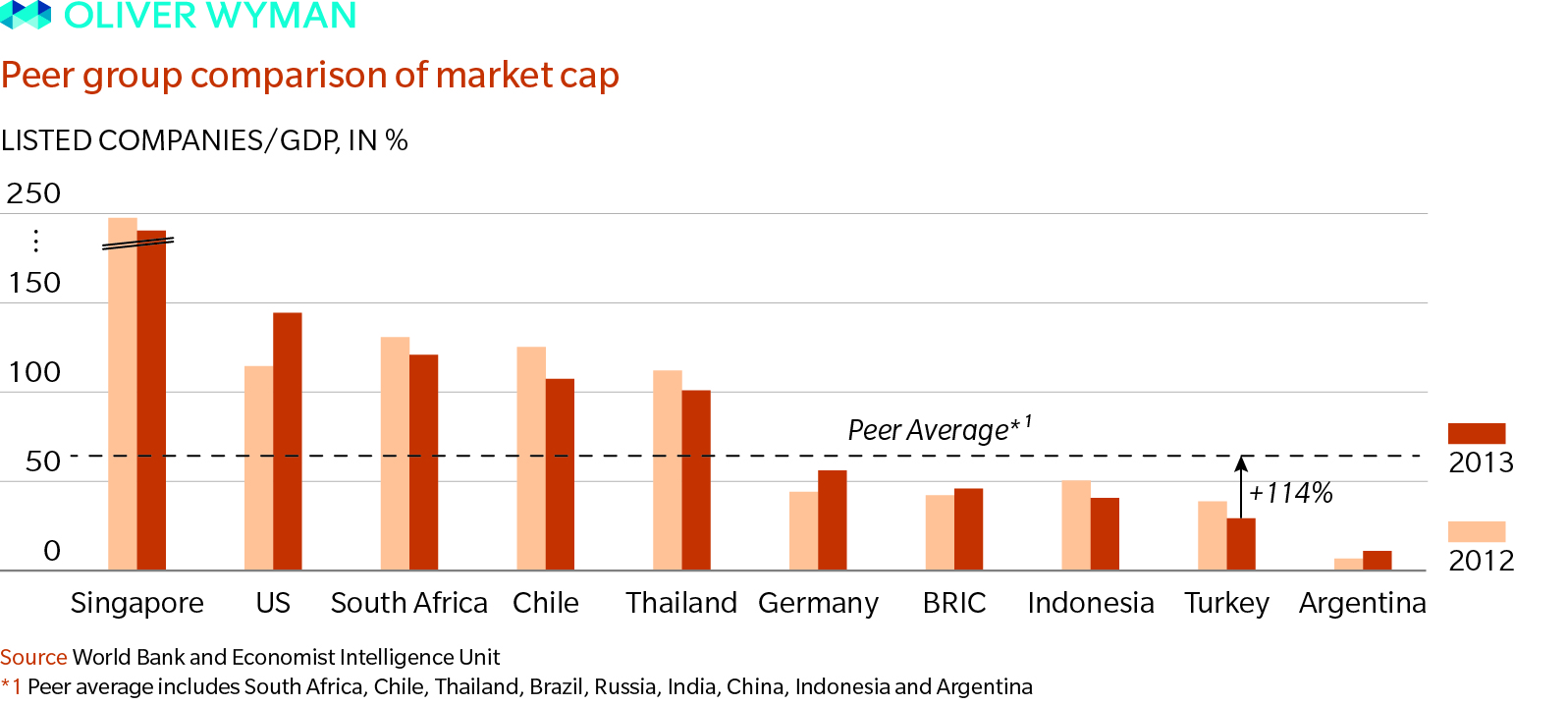There are many reasons why a deepening of Turkey’s capital markets is now required. The government’s heavy financing needs funded by banks with ever growing branch networks have crowded out other borrowers for a number of decades. The post-crisis response at the turn of the millennium has led to the replacement of government securities on high-growth bank balance sheets by commercial and consumer lending using largely the existing liability structures. This transformation is almost complete: loan-to-deposit ratios tripled between 2003 and 2013 from 43% to 111%, while capital adequacy halved from 31% to 15%.
At this point, banks are increasingly more selective on how they use their balance sheets, and will likely not be able to finance Turkey’s growing economy at the same rate alone. Capital markets will need to fill in some of the gaps. The development of capital markets requires simultaneous support from a wide range of market constituents. While policy makers in Turkey need to continue with the actions to encourage the growth of domestic savings, intermediaries and market infrastructure players need to educate investors and borrowers on emerging asset classes such as corporate bonds, derivatives or asset management products.
The growth of capital markets will bring about a set of challenges to the industry. There are three major areas where players will encounter challenges, and resulting opportunities:
- Opening up of the current government and bank-dominated debt capital markets to
private businesses. - In equity markets, increasing the number and depth of smaller cap listings to allow
investors the access to a wider range of portfolio selection options. - Creating a sizeable buy side for the newly created assets, including asset managers, pension funds and insurers.
Various players will seek to seize these opportunities. A different set of success factors will be relevant and the players who recognize this shift early will thrive. Just like the boom of commercial banking over the last 15 years, we expect to see a different set of leaders inside the capital markets ecosystem who will flourish and gain prominence.
If you wish to know more about our Corporate & Institutional Banking Practice please click here.
Peer Group Comparison of Market Cap
In terms of market capitalization, Turkey’s equity markets are significantly smaller than peers – benchmarking Turkey to the average peer shows that equity markets could easily double in size.








